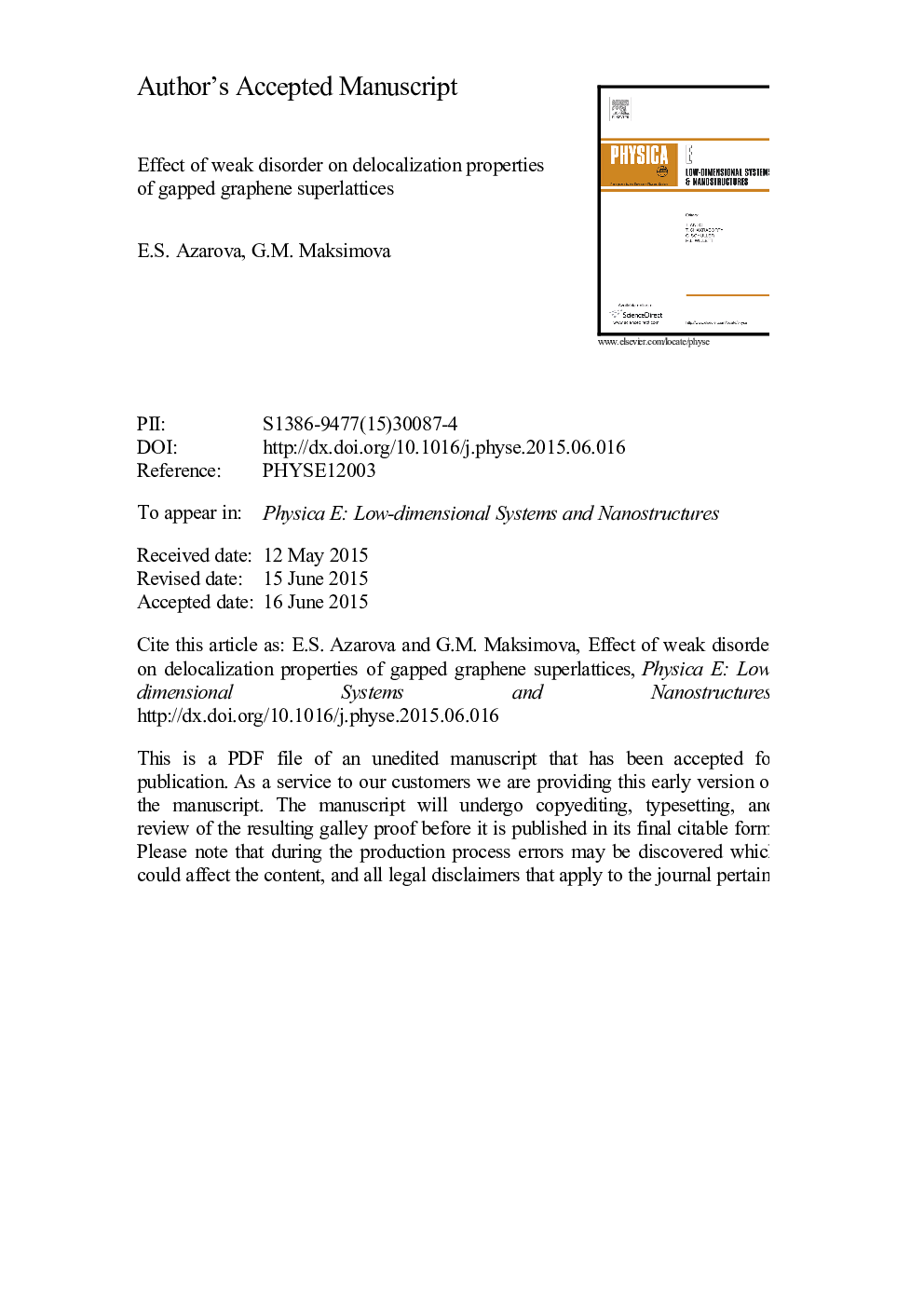| Article ID | Journal | Published Year | Pages | File Type |
|---|---|---|---|---|
| 7933976 | Physica E: Low-dimensional Systems and Nanostructures | 2015 | 12 Pages |
Abstract
We study the effect of weak disorder on the delocalization properties of gapped graphene superlattice (SL) formed by periodically located rectangular potential barriers. We consider two types of the SLs: the SLs with uniform gap and SLs consisting of alternating layers of gapped and gapless graphene regions. Using the perturbative approach we obtain an analytical expression for the inverse localization length (ILL) derived for the case of randomly fluctuating geometric and energetic parameters. In the first case, when the barrier (well) width fluctuates around its mean value, the corresponding equation for the ILL reveals the presence of the Fabry-Perot resonances, at which the localization length diverges. These resonances are exact, i.e., are stored in any degree of disorder. It has been found that the localization properties manifest stronger for the particles with energies lying in the non-resonant bands where our approach is extremely sensitive to the degree of disorder. For the case of weakly fluctuating both barrier and well widths we analytically obtain ILL taking correlations into account. The main effect of the correlations, which lead to an increase (or decrease) in the localization length, was revealed near the double resonance arising at coincidence of two Fabry-Perot resonances associated with barrier and well widths. The random fluctuations of the potential strength also lead to the delocalization resonances. However, they exist only in a weak-disorder approximation. We found that, for an array composed of alternating strips of gapless and gapped graphene modifications these resonances can appear only for normally incident particles in contrast to the SL with a uniform gap. For such particles, the delocalization resonances occur also in the purely random potential. This means, in particular, that in the one-dimensional case, not all the states of the massive Dirac particles are localized in the presence of weak disorder.
Related Topics
Physical Sciences and Engineering
Materials Science
Electronic, Optical and Magnetic Materials
Authors
E.S. Azarova, G.M. Maksimova,
